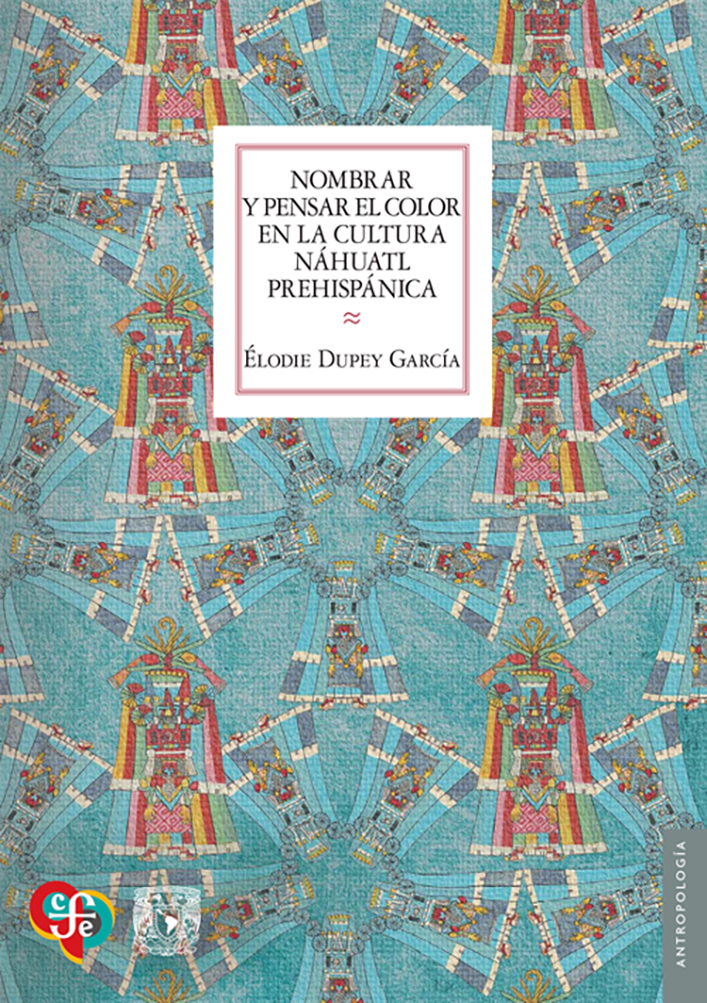
Élodie Dupey García
Nombrar y pensar el color en la cultura náhuatl prehispánica
Danièle Dehouve, prólogo
ISBN (UNAM) 978-607-30-8927-2
ISBN (FCE) 978-607-16-8318-2
ISBN (CEMCA) 978-2-11-172306-1
(Sección de Obras de Antropología)
To understand the meaning of the sculptures and temples of Mexico-Tenochtitlan’s Templo Mayor, to decipher the divinatory codices of central Mexico, to analyze contemporary indigenous rituals, or to delve into the anthropology of food and clothing, it is essential to study color. In this regard, this book newly published by Élodie Dupey García is, in itself, a landmark event for Mesoamerican studies in all its scopes. Nonetheless, this work is also a milestone for the future of comparative studies on color perception and naming, as it demonstrates how Nahuatl speakers expressed the multiple dimensions of color. In comparison, previous approaches appear extremely limited, as they focus solely on hue, which represents merely a small part of the complex phenomenon that gives rise to the perception and sensation of color. Thus, thanks to the work of Dupey García, it is now possible to imagine how anthropology and ethnolinguistics could move beyond this old divide to comprehensively address the complex phenomenon that brings together color perception/naming and the properties of light.
Agradecimientos
Prólogo
Danièle DehouveAdvertencia sobre la ortografía y la traducción del náhuatl
Introducción
I. Estudiar la expresión del color en náhuatl: fuentes y métodos
II. Sobre las huellas del color: palabras, materias y prácticas
III. Etimología y construcción de la terminología cromática
IV. Sensibilidad al color y organización de la experiencia cromática
V. Más allá del color: materias para expresar lo sensible y los simbólico
Conclusión
Apéndice. Vocabulario del color en náhuatl clásico
Cuadros
Bibliografía
Índice analítico
Índice general

